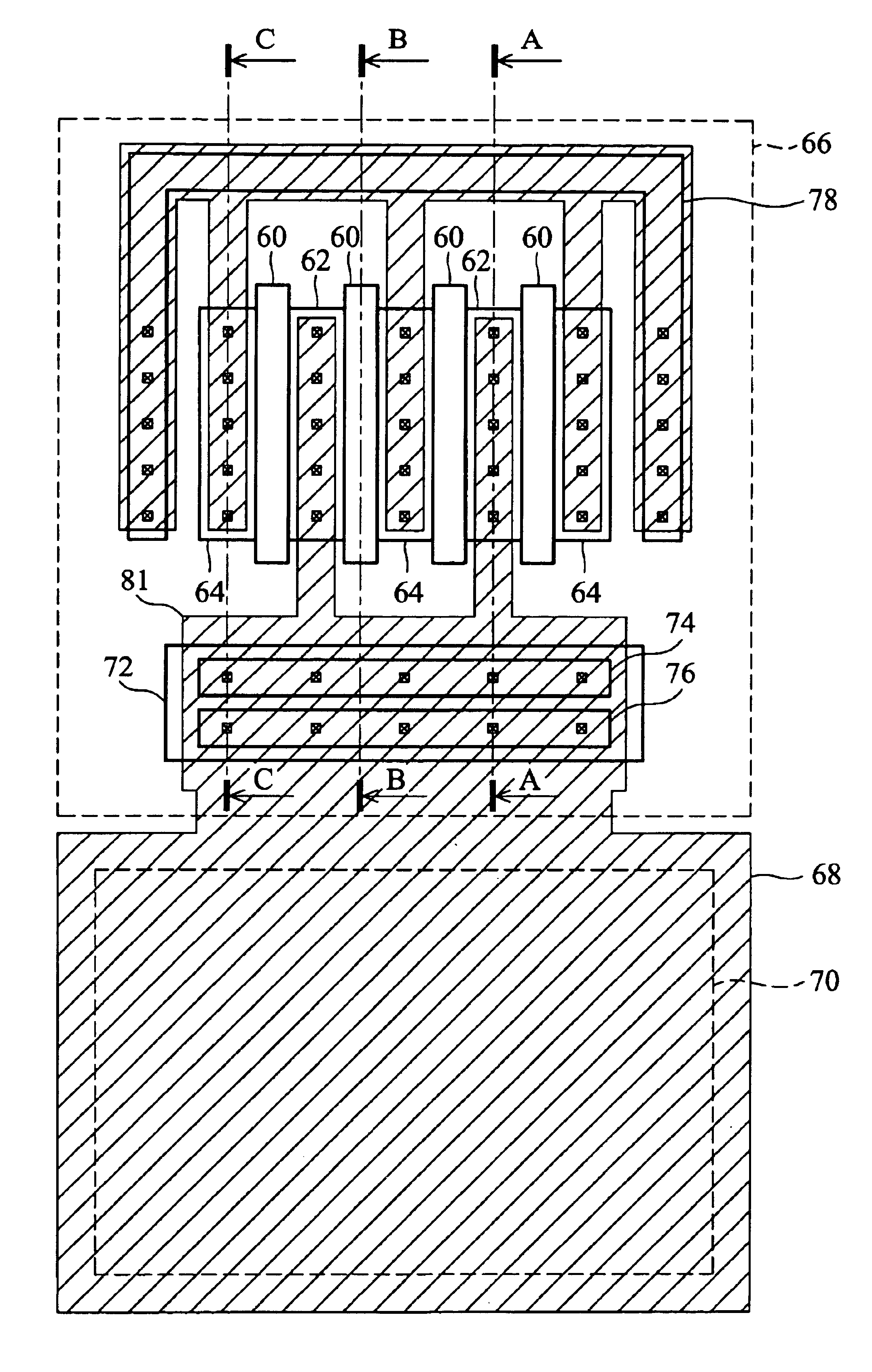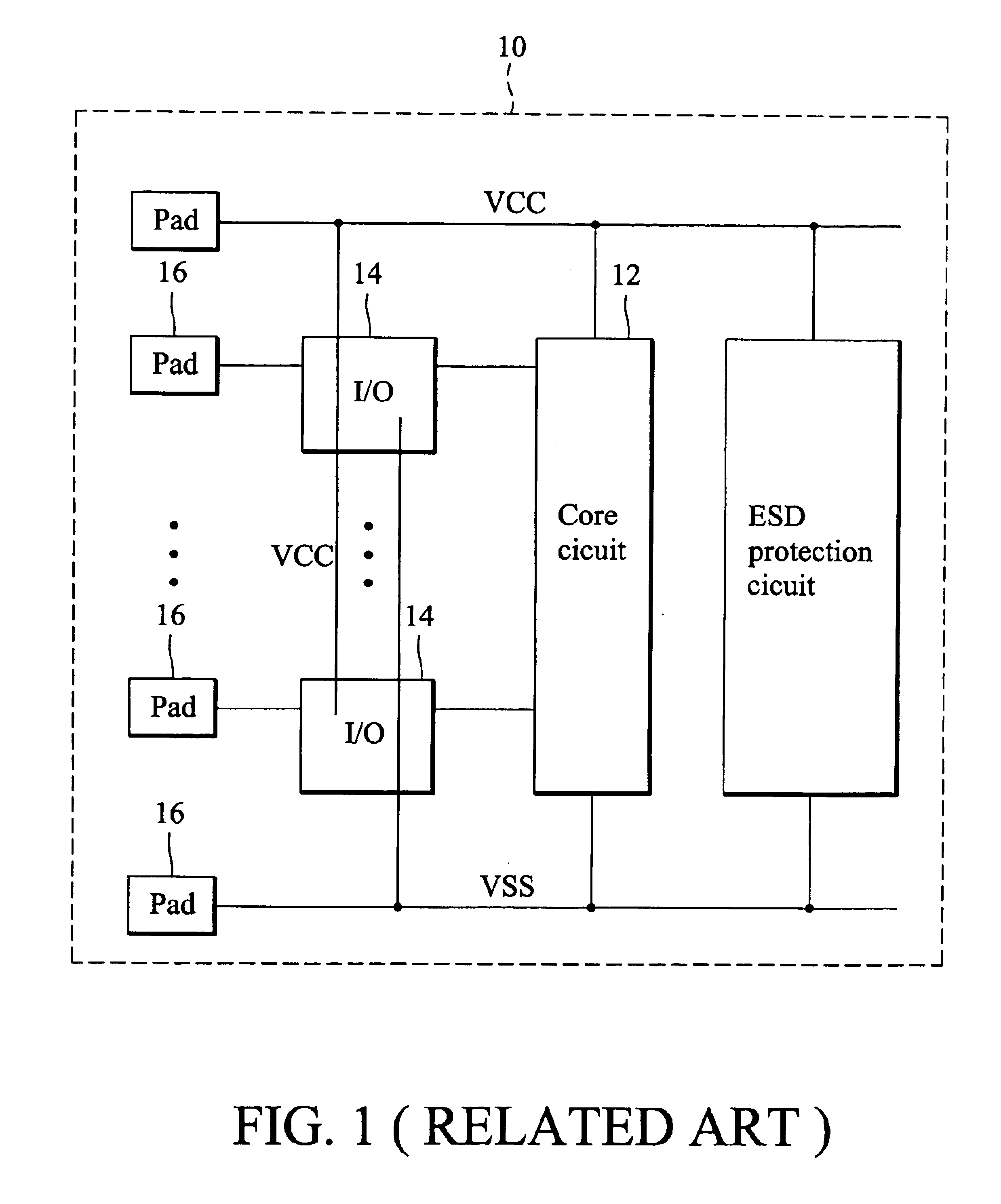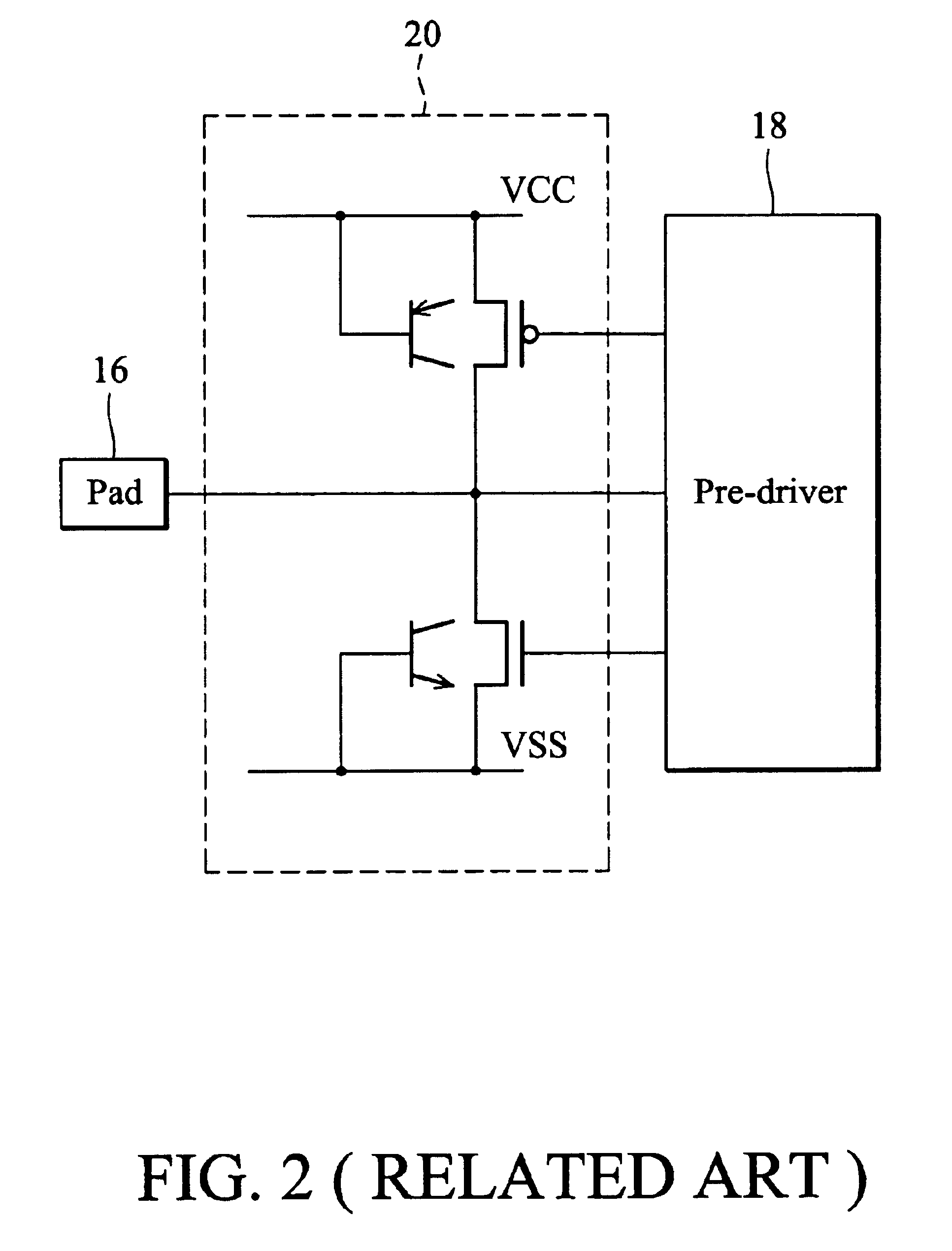Input/output cell with robust electrostatic discharge protection
a technology of electrostatic discharge and input/output cell, which is applied in the direction of semiconductor devices, semiconductor/solid-state device details, electrical apparatus, etc., can solve the problems of esd in electronic devices being a major obstacle to product reliability, damage to any device, and highly vulnerable to esd stress, so as to efficiently conduct large esd current and enhance esd protection
- Summary
- Abstract
- Description
- Claims
- Application Information
AI Technical Summary
Benefits of technology
Problems solved by technology
Method used
Image
Examples
first embodiment
FIG. 6 depicts a layout of the present invention, including an I / O cell 66 and a pad 68. FIGS. 7A to 7C are cross sections of FIG. 6 along lines AA, BB and CC, respectively. A finger-type NMOS transistor is shown in FIG. 6 as an example. Nevertheless, this invention can also be embodied by a finger-type PMOS transistor.
In FIG. 6, the finger-type NMOS has gate fingers 60, source regions 64 and drain regions 62. The finger-type NMOS transistor is formed in an active region substantially surrounded by an isolation region. Source regions 64 and drain regions 62 are of N-type. Through contacts and metal wires, source regions 64 are connected to a power rail, VSS, and drain regions 62 to pad 68, on which an opening 70 is formed in a passivation layer (not shown). Each gate finger 60 is located on a channel region between one source region 64 and one drain region 62. Gate fingers 60 are substantially parallel to each other. Gate fingers 60 can be connected either to a pre-driver to serve a...
second embodiment
FIG. 8 depicts a layout of the present invention. FIGS. 9A to 9C are cross sections of FIG. 8 along lines AA, BB and CC, respectively. The finger-type NMOS can be replaced by a field device. Gate fingers in FIG. 6 are replaced by a field-oxide-isolation stripe such as the STI regions in FIG. 8. FIGS. 9A and 9C are the same with FIGS. 7A and 7C. In FIG. 9B, an STI region 84 is formed on a channel region 82. The operation principle during an ESD event for the semiconductor device in FIG. 8 is substantially the same as that for the semiconductor device in FIG. 6.
The pattern in N-well stripe 72 can be altered. For example, FIG. 10 shows that one N+ region is divided into a number of separate N+ sub-regions 761. Separate N+ sub-regions 761 provide a contact region with less area than one N+ region 76 and forms a resistor with higher resistance to conduct the electron flow after parasitic BJTs go into snapback. This resistor with higher resistance will lower the SCR trigger current.
FIG. 1...
PUM
 Login to View More
Login to View More Abstract
Description
Claims
Application Information
 Login to View More
Login to View More - R&D
- Intellectual Property
- Life Sciences
- Materials
- Tech Scout
- Unparalleled Data Quality
- Higher Quality Content
- 60% Fewer Hallucinations
Browse by: Latest US Patents, China's latest patents, Technical Efficacy Thesaurus, Application Domain, Technology Topic, Popular Technical Reports.
© 2025 PatSnap. All rights reserved.Legal|Privacy policy|Modern Slavery Act Transparency Statement|Sitemap|About US| Contact US: help@patsnap.com



